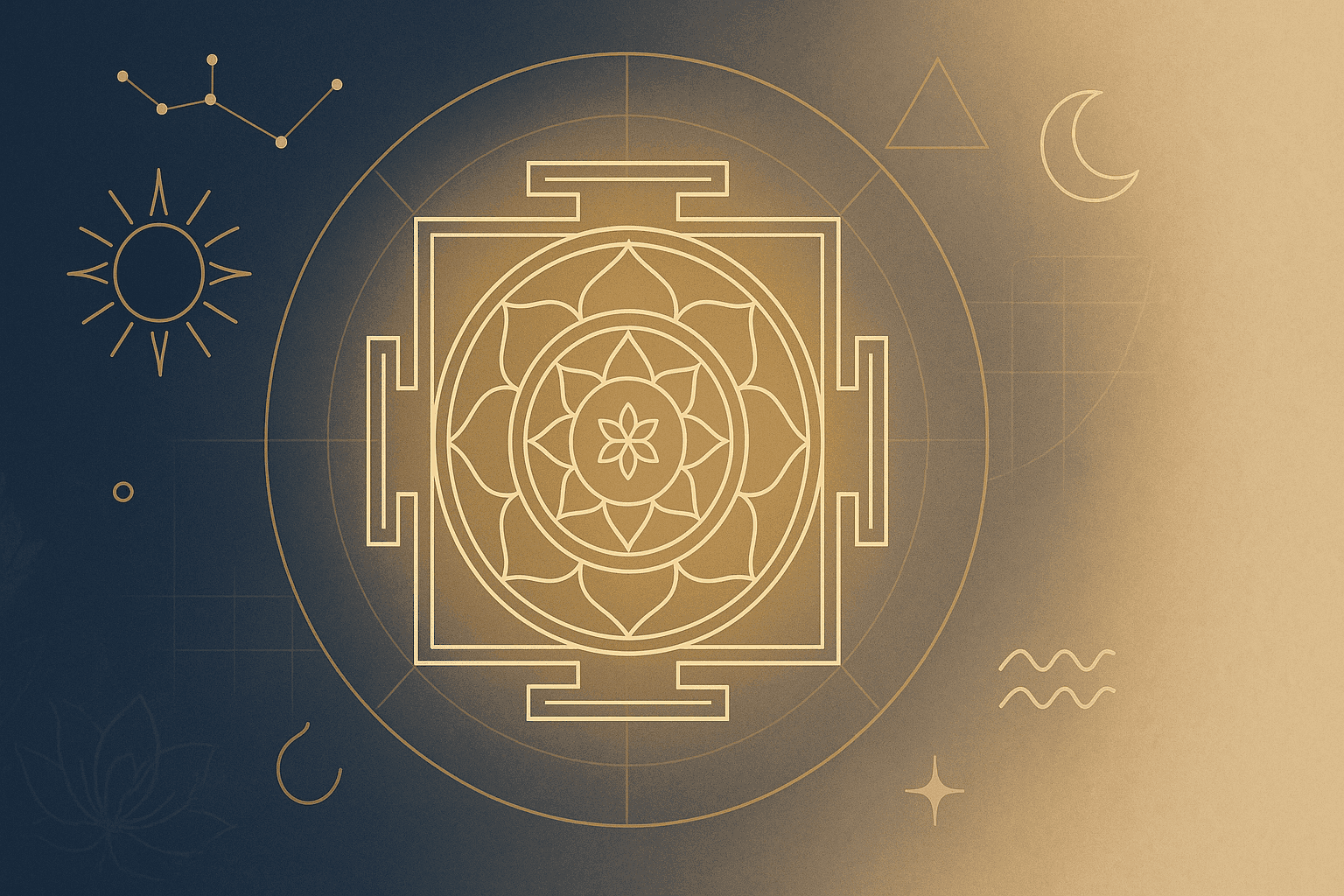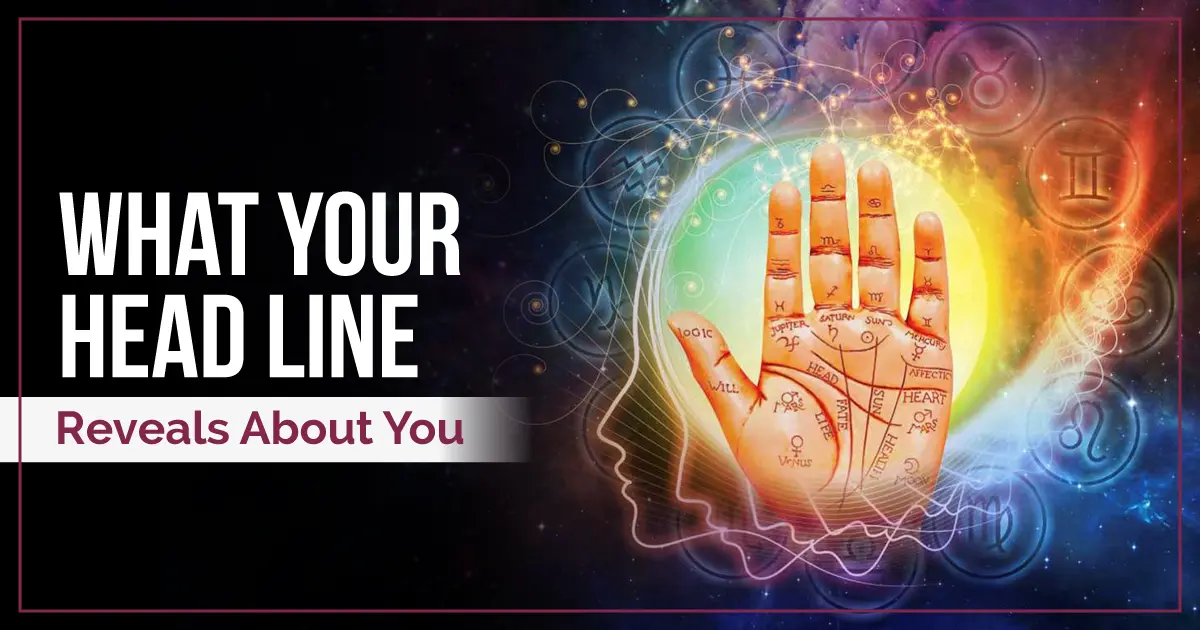The Head Line in Palmistry: Decoding the Line of Thought
By Aashish Patidar Jun 19 2025
The headline, often referred to as the line of thought or wisdom line, holds a central place in palmistry as it reveals one’s mental patterns, decision-making style, and overall thinking capabilities. Its length, shape, depth, and markings can unveil key insights into a person’s communication habits, creativity, logical aptitude, and even stress levels. Interpreting this line allows for a deeper understanding of how an individual processes information and responds to the world.
In this blog, we’ll explore what the headline represents, how its length and direction reflect intellect, and the meanings behind special patterns like forks, double lines, and tassels. We’ll also decode markings such as islands, crosses, and chains, examine how the head line interacts with other major palm lines, and provide a step-by-step guide to analysing it.
Finally, we’ll show how the Institute of Vedic Astrology’s online palmistry course empowers learners to confidently read real hands and apply these ancient insights. By the end, you’ll see how the headline serves as a detailed map of intellect, emotion, and personality.
What Is the Head Line?
The headline is the primary line associated with intellect and mental clarity in palmistry. It typically starts from the edge of the palm between the thumb and index finger and progresses horizontally across the palm, usually lying between the lifeline (below) and the heart line. This line reflects your style of thought—analytical or creative, practical or imaginative. A deeper, sharper line often indicates mental sharpness, focus, and strong reasoning capacity. In contrast, a faint or broken line may point to scattered attention or fluctuating thought patterns. Understanding its nuances offers insight into your cognitive abilities and the way you interact with the world.
What the Length of Your Head Line Says About Your Mind
- Long head line (extending below little finger): Indicates deep, thorough thinkers who reflect deeply, sometimes to the point of overanalysis.
- Medium (runs to ring finger): Represents balanced thinkers—intelligent, practical, and socially adept.
- Short (ends under middle finger): Suggests quick decision-making, spontaneity, and sometimes impulsiveness.
These lengths hint at your cognitive pace—are you someone who ponders deeply, responds efficiently, or takes a cautious but thorough middle path?
Shape & Direction
The curvature or straightness of the head line reveals whether you lean toward logic or creativity:
- Straight: Analytical, logical, and decisive—often found in those drawn to science or commerce.
- Gently curved: Indicates emotional intelligence, strong communication skills, and adaptability—typical of artists, counsellors, or social communicators.
- Strong downward slope: Signifies deep imagination, emotional sensitivity, or artistic talent; brings intuition but also emotional volatility.
Recognising which style resonates with you helps contextualise your thinking tendencies and emotional approach.
Special Patterns
Certain unique patterns on the head line add nuance:
- Double head line: Rare and denotes dual thinking—analytical and intuitive simultaneously. Women with this often display strong entrepreneurship skills, though may face relational complexities.
- Forked endings:
- Upward forks: Suggest creativity, adaptability, and a pleasant social nature.
- Downward forks: Indicate strong analytical or problem-solving skills.
- Tassels at the end: Often signal nervousness, headaches, or stress-related issues.
- Islands: Circular breaks indicating periods of stress or disrupted thought processes—larger islands might indicate memory or concentration issues.
These distinctive features reflect nuanced mental health and personality facets that go beyond basic interpretations.
Markings: Crosses, Chains & More
- Crosses: Often show mental tension, inner conflict, anxiety, or possible accidents related to the head.
- Stars: A star along the head line can indicate either mental brilliance or severe crisis, depending on clarity and location.
- Chains (linked loops): Suggest scattered focus, uncertainty, or fluctuating concentration—especially when crossing with the life line, it may point to health vulnerabilities or lack of vitality.
- Broken line: Marks sudden interruptions in thought processes or unexpected changes in career or plans.
These markings can indicate critical psychological or emotional themes, guiding deeper exploration through palmistry.
Line Interaction: Heart & Lifeline Effects
The head line's interaction with adjacent lines adds context:
- Joined to the lifeline at the start: If the head line and life line merge before separating, it shows cautious or introverted nature; longer links indicate sensitive pondering.
- Separated (“川” palm): An early split suggests independence, bold thinking, and success driven by autonomy; may also hint at controlling tendencies.
- Close to heart line end: Indicates strong emotional alignment in decision-making, trust in relationships, and supportive networks.
- Crossing heart line or ending on little finger: Symbolises common-sense intelligence with emotional flux and ups and downs in life.
These connections highlight how your thinking is influenced by emotion, caution, or independence.
How to Read It: A Simple Guide
Here’s a step-by-step process to read a head line:
1. Choose the dominant hand for actions and the non-dominant for innate traits.
2. Observe length: classify long, medium, or short.
3. Check direction: straight, curved, or steeply sloped.
4. Identify special features: forks, double lines, tassels, islands.
5. Look for markings: chains, crosses, stars, breaks.
6. Analyse connections: where the head line meets or diverges from life/heart lines.
7.Synthesize interpretation: combine insights—e.g., long + curved + forked = deep thinker with emotional wisdom and creative versatility.
Why Learn with IVA
IVA’s Online Palmistry Course offers:
- Comprehensive training: from basic palm shapes to advanced lines, including head line analysis—all in beginner-to-advanced modules.
- Rich instructional material: 300+ hand sketches and nearly 1,000 pages of curated study resources.
- Expert instructors: blend Vedic and modern palmistry principles for nuanced reading.
- Interactive case-study sessions: practice real-life chart reading under expert guidance.
- Flexible online format: learn at your own pace with live and recorded sessions.
- Practical orientation: courses designed to empower you professionally, equipping you to offer accurate and insightful readings.
Many students report newfound confidence, accuracy in chart reading, and deeper intuitive understanding.
Final Thoughts
The head line in palmistry offers a rich portrait of your thought process—revealing whether you're analytical, creative, emotionally aligned, or independent. By examining its length, curvature, patterns, markings, and how it intersects with other lines, you gain deeper insight into your mental style and personality.
If you're ready to master head line interpretations and become proficient in palmistry, IVA’s Online Palmistry Course is tailored for you. With expert training, comprehensive materials, and practical exercises, it sets you on the path to confident interpretation.
Enrol today and embark on a journey of intuitive and mindful palmistry with IVA’s expert guidance.
FAQs
Q1: What does the head line reveal?
It reflects your cognitive style, thought clarity, analytical vs creative tendencies, and mental resilience.
Q2: Which hand should I read?
Use your dominant hand for conscious habits, and your non-dominant hand for potential and inherited traits.
Q3: Can the head line change over time?
Yes—lines may shift due to personality growth, stress, or significant life changes.
Q4: Do all unusual marks indicate problems?
Not necessarily—crosses can signal tension but also awareness; chains might mean concentration shifts rather than chronic issues.
Q5: How long to learn accurate head line interpretation with IVA?
With IVA’s structured modules and case-study practice, students often gain confidence within 3–4 months of consistent study.
Search
Recent Post
-
Kaal sarp dosh in astrology – meaning, effects, remedies & solutions
 Astrology has always been a guiding light for peop...Read more
Astrology has always been a guiding light for peop...Read more -
Vastu tips for home construction – a complete guide for a harmonious home
 Building a home is one of the most significant mil...Read more
Building a home is one of the most significant mil...Read more -
10 proven vastu remedies for health problems: a vedic vastu guide to wellness
 Are you struggling with constant fatigue, sleeples...Read more
Are you struggling with constant fatigue, sleeples...Read more -
2nd house in astrology: wealth, family & value systems
 In Vedic astrology, the 2nd House in astrology is ...Read more
In Vedic astrology, the 2nd House in astrology is ...Read more -
Types of dasha in astrology: decode life’s timelines with vedic wisdom
 In Vedic astrology, timing is everything. While yo...Read more
In Vedic astrology, timing is everything. While yo...Read more

